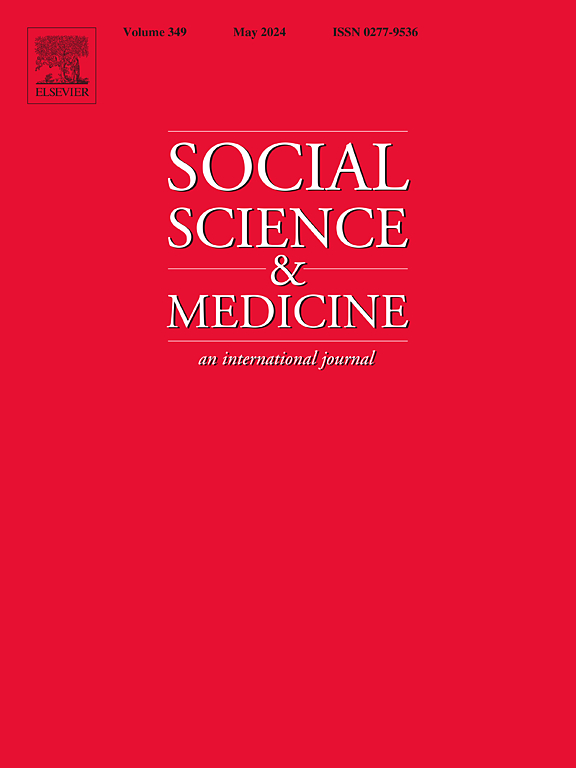The role of toilets in public spaces: An interview study with individuals experiencing gastrointestinal issues
IF 4.9
2区 医学
Q1 PUBLIC, ENVIRONMENTAL & OCCUPATIONAL HEALTH
引用次数: 0
Abstract
This study, conducted in Norway, addresses the issue of inadequate access to toilets in public spaces and transportation systems, particularly concerning individuals with disabilities who have heightened needs of toilets. The study employed in-depth interviews with individuals experiencing various gastrointestinal issues, including bladder-related problems. Utilizing a qualitative approach, interviews were conducted via telephone to accommodate potential travel difficulties. This approach also leveraged previous successes with sensitive topics. A sample size of 10 interviews was chosen based on prior research indicating that key themes typically emerge within this range. Key findings indicate significant barriers to participation in societal activities due to insufficient toilet facilities. For transport in particular, boats and trains emerge as preferred modes over buses, trams and subways due to the presence of onboard toilets. Notably, urban areas and recreational spots like parks and beaches suffer from a lack of restroom facilities. In order to improve these facilities, informants highlighted measures such as provision of open, hygienic toilets with barrier-free access. These measures should be coupled with clear signage and awareness campaigns regarding toilet facilities tailored to individuals with diverse health needs. The study underscores the critical role of toilets in maintaining public health and acknowledges the right to access toilets as recognized by the United Nations. Testimonials from individuals with disabilities underscore the profound impact of toilet accessibility on their daily lives, revealing instances of social isolation and restricted activities due to inadequate facilities. Proposed interventions encompass improved hygiene standards, increased toilet availability, and enhanced staff training to cater to the diverse needs of users. The study advocates for legislative reforms and policy guidelines to address the pressing issue of toilet accessibility, aiming to foster inclusivity and equal participation in public life for individuals with disabilities.
公共场所厕所的作用:对肠胃不适者的访谈研究。
这项在挪威进行的研究探讨了公共场所和交通系统中厕所不足的问题,尤其是对厕所有更高需求的残疾人。研究采用了深入访谈的方式,采访了有各种肠胃问题(包括膀胱相关问题)的人。采用定性方法,通过电话进行访谈,以适应潜在的旅行困难。这种方法还利用了以往在敏感话题上的成功经验。根据先前的研究表明,关键主题通常会在这个范围内出现,因此选择了 10 个访谈样本量。主要调查结果显示,由于厕所设施不足,参与社会活动存在很大障碍。特别是在交通方面,由于船上厕所的存在,船只和火车成为比公共汽车、有轨电车和地铁更受欢迎的交通工具。值得注意的是,城市地区以及公园和海滩等休闲场所也存在厕所设施不足的问题。为了改善这些设施,信息提供者强调了一些措施,如提供开放、卫生、无障碍的厕所。在采取这些措施的同时,还应为有不同健康需求的人提供清晰的标识,并开展有关厕所设施的宣传活动。这项研究强调了厕所在维护公共卫生方面的关键作用,并承认了联合国所承认的使用厕所的权利。残疾人的感言强调了厕所无障碍对他们日常生活的深远影响,揭示了由于设施不足而导致的社会隔离和活动受限的情况。建议采取的干预措施包括提高卫生标准、增加厕所供应量和加强员工培训,以满足用户的不同需求。本研究倡导通过立法改革和政策指导来解决厕所无障碍这一紧迫问题,旨在促进包容性和残疾人平等参与公共生活。
本文章由计算机程序翻译,如有差异,请以英文原文为准。
求助全文
约1分钟内获得全文
求助全文
来源期刊

Social Science & Medicine
PUBLIC, ENVIRONMENTAL & OCCUPATIONAL HEALTH-
CiteScore
9.10
自引率
5.60%
发文量
762
审稿时长
38 days
期刊介绍:
Social Science & Medicine provides an international and interdisciplinary forum for the dissemination of social science research on health. We publish original research articles (both empirical and theoretical), reviews, position papers and commentaries on health issues, to inform current research, policy and practice in all areas of common interest to social scientists, health practitioners, and policy makers. The journal publishes material relevant to any aspect of health from a wide range of social science disciplines (anthropology, economics, epidemiology, geography, policy, psychology, and sociology), and material relevant to the social sciences from any of the professions concerned with physical and mental health, health care, clinical practice, and health policy and organization. We encourage material which is of general interest to an international readership.
 求助内容:
求助内容: 应助结果提醒方式:
应助结果提醒方式:


